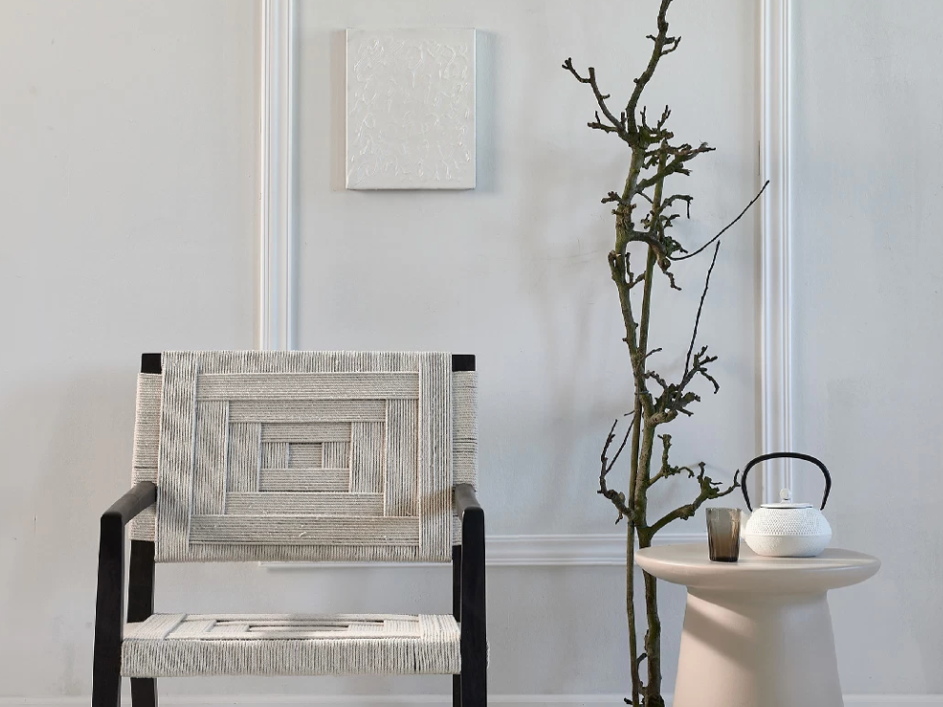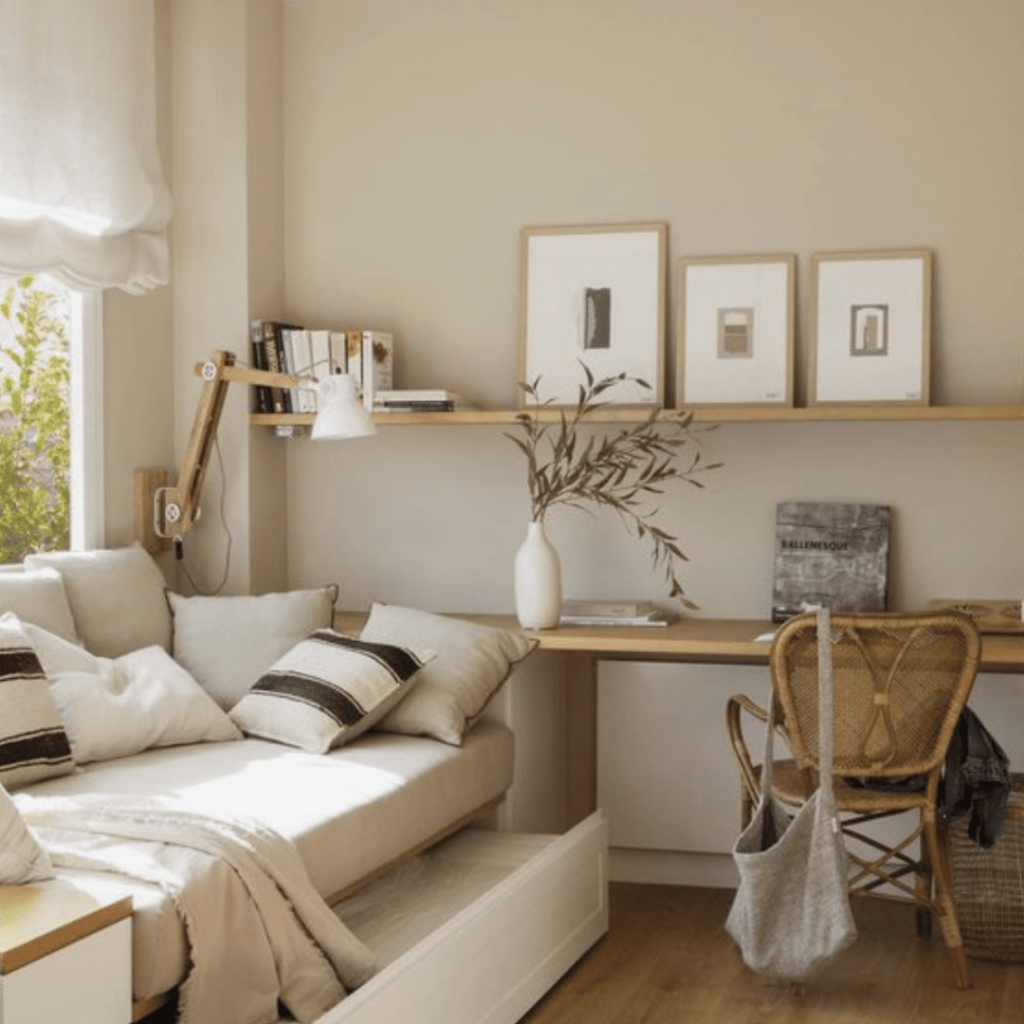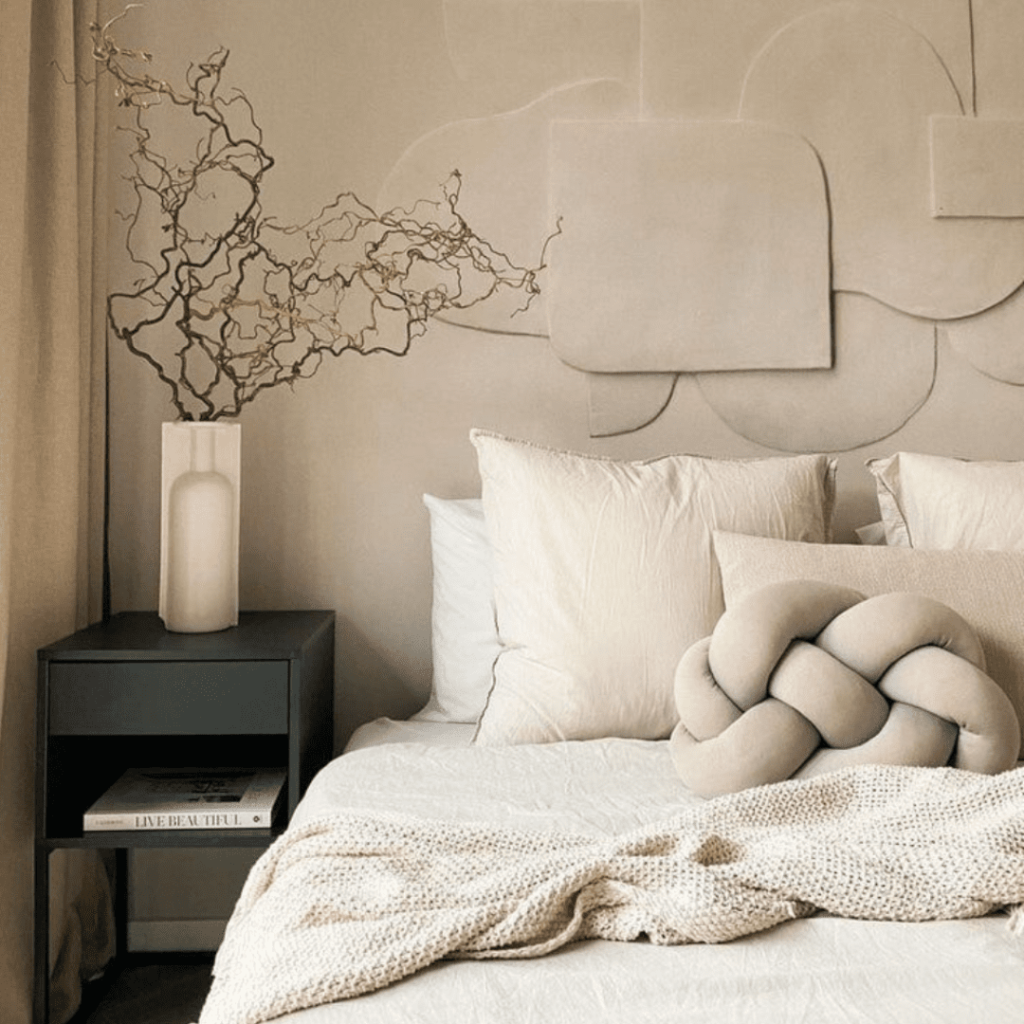
In the world of interior design, trends come and go, but some styles endure the test of time. One such enduring trend is the Japandi interior style. Japandi, a fusion of Japanese and Scandinavian design elements, combines the timeless elegance of Japan with the minimalist simplicity of Scandinavian decor. In this comprehensive guide, we’ll delve into what Japandi interior is, its significance, and how you can bring this harmonious style into various rooms of your home – the living room, kitchen, bedroom, and bathroom.
What is a Japandi Interior?
Japandi interior is a harmonious blend of two distinct design philosophies – Japanese and Scandinavian. It emphasizes simplicity, functionality, and a connection to nature. This style is characterized by a balance between minimalism and warmth, creating spaces that are both aesthetically pleasing and highly functional.
Japandi takes inspiration from Japanese design principles such as Wabi-Sabi and Zen, which prioritize natural materials, craftsmanship, and a sense of tranquility. Scandinavian design, on the other hand, contributes its trademark clean lines, neutral color palettes, and an emphasis on practicality and comfort. The result is a unique interior style that brings together the best of both worlds.
What Does Japandi Mean?
The term “Japandi” is a portmanteau of “Japan” and “Scandinavia.” It signifies the seamless fusion of these two design philosophies into a cohesive and appealing interior style. Japandi represents a marriage of cultures, emphasizing balance, simplicity, and a deep appreciation for the beauty of imperfection.
The Difference Between Japandi and Wabi-Sabi
While both Japandi and Wabi-Sabi draw inspiration from Japanese design principles, they have distinct characteristics:
- Japandi:
- Incorporates Scandinavian minimalism.
- Balances minimalism with warmth and comfort.
- Emphasizes clean lines and functionality.
- Utilizes a neutral color palette with occasional pops of muted colors.
- Focuses on harmony between elements and nature.
- Wabi-Sabi:
- Celebrates imperfection and transience.
- Values the beauty of weathered, worn, or aged materials.
- Embraces asymmetry and irregularity in design.
- Prioritizes authenticity, simplicity, and the passage of time.
- Often features a muted and earthy color palette.
While both styles share a connection to Japanese design principles, Japandi leans more toward the clean lines and functionality of Scandinavian design, while Wabi-Sabi celebrates imperfection and the passage of time.
Choosing Colors for Japandi
Selecting the right colors is crucial when designing a Japandi interior. This style is known for its calming and neutral color palette, which creates a serene and harmonious atmosphere. Here are some color suggestions:
- Earthy Neutrals: Begin with a base of neutral colors such as soft grays, warm beige, and muted whites. These colors provide a soothing backdrop that complements the natural materials used in Japandi interiors.
- Muted Pastels: Incorporate muted pastel shades like pale blue, soft pink, or light green as accent colors. These hues add a touch of serenity without overwhelming the space.
- Warm Woods: The Japandi style relies heavily on wood, so opt for warm, light-toned wood finishes like oak or ash for furniture, flooring, and decor elements. These woods bring a sense of nature indoors.
- Black Accents: A hint of black can provide contrast and depth to the color palette. Use it sparingly for details like picture frames, cabinet handles, or light fixtures.
Now, let’s explore how to bring the Japandi interior style into specific rooms of your home.
Japandi Living Room
The living room is often the heart of the home, and it’s the perfect place to showcase the Japandi style:
- Furniture Selection: Choose low-profile, streamlined furniture with clean lines. Incorporate pieces made from natural materials like wood and leather.
- Minimalist Decor: Keep decor minimal but meaningful. Consider a single statement piece, like a well-crafted wooden coffee table or a handmade ceramic vase with fresh flowers.
- Neutral Color Palette: Stick to a neutral color scheme with soft grays, beige, and whites. Add pops of muted pastels or earthy tones in cushions or artwork.
- Natural Light: Maximize natural light by using sheer curtains or opting for open window treatments. Natural light enhances the sense of serenity in the space.
- Greenery: Introduce indoor plants for a touch of nature. Choose low-maintenance varieties like succulents or a bonsai tree.
Japandi Kitchen
The Japandi style can also be integrated into your kitchen for a functional yet inviting space:
- Sleek Cabinetry: Install simple, handleless cabinets in light wood tones. Keep the countertops clutter-free for a minimalist look.
- Open Shelving: Consider open shelving to display stylish kitchenware and ceramics. Choose pieces with clean lines and neutral colors.
- Natural Materials: Use natural stone or wood for countertops and backsplashes. These materials add warmth and texture to the kitchen.
- Functional Accessories: Opt for practical kitchen accessories like bamboo cutting boards, minimalist knife sets, and ceramic storage jars.
- Statement Lighting: Choose pendant lights with a Japanese or Scandinavian design influence to serve as a focal point.
Japandi Bedroom
Transform your bedroom into a peaceful sanctuary with Japandi elements:
- Low Bed Frame: Select a low, platform-style bed with a simple headboard. Keep the bedding neutral and add layers for texture.
- Soft Textiles: Incorporate soft textiles like linen or cotton for bedding, curtains, and throw pillows. Stick to a calming color palette.
- Natural Accents: Include wooden furniture pieces such as a nightstand or a dresser. Wooden accents bring warmth to the bedroom.
- Minimalist Decor: Keep decor to a minimum with a few carefully chosen items like a Japanese-inspired shoji screen or a Scandinavian wall clock.
- Dimmable Lighting: Install adjustable, dimmable lighting to create a cozy and serene ambiance.
Japandi Bathroom
Even your bathroom can embrace the Japandi style for a spa-like retreat:
- Neutral Tones: Use neutral tiles and paint colors for a serene atmosphere. Consider earthy tones like sand, stone, or light gray.
- Wooden Vanity: Opt for a wooden vanity with a natural finish. This adds warmth to the space and complements the minimalist design.
- Soaking Tub: If space allows, install a deep soaking tub for a luxurious touch. Pair it with a wooden bath caddy for added functionality.
- Organic Textures: Incorporate natural textures like bamboo bath mats, rattan baskets, and cotton towels.
- Minimalist Accessories: Choose simple, functional bathroom accessories in muted colors. Avoid clutter to maintain the minimalist aesthetic.
Incorporating the Japandi interior style into your home can create a space that exudes harmony, simplicity, and timeless elegance. By following the tips provided for various rooms, you can transform your living space into a haven of tranquility and style. Remember to embrace


